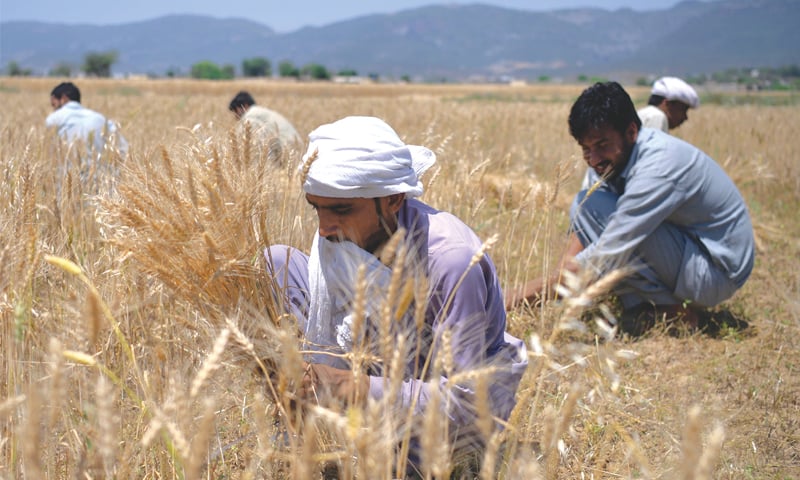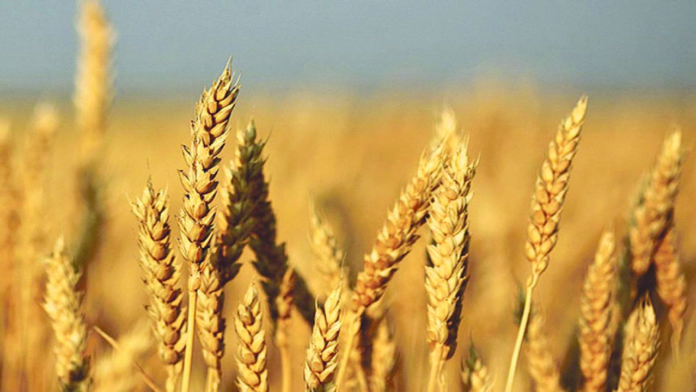Food security is of central importance to national security. That it was not been realized is surprising given that the sieges of forts and were only successful by forming them into cities starvation Now it will have to remain central to our security imperatives. With a population of more than 200 million people more than half of which are living below or close to the poverty line the provision, the production and distribution of good quality staple food must be a central to national security. The absence of food availability would have unacceptable consequences for law and order, public health and the future of the nation at large.
Cereals remain our main staple food providing 62% of total energy. While in 2018, Pakistan wheat output reached a high of 26.3 million tonnes, according to the FAO Pakistan produced 21,591,400 metric tons of wheat in 2019, still more than all of Africa (20,304,585 metric tons) and nearly as much as all of South America (24,557,784 metric tons). This country produces as much as each of two fairly well populated continents. Wheat production and processing must remain the first focus of our policy makers.
Fully 76% of the wheat is produced in Punjab, 16% in Sindh, 5% in KP and 3% in Baluchistan. The average wheat production per acre according to bakhabarkissan.com though with 26Mnn is higher in Sindh than in Punjab where it is around 23Mnn per acre. However this is still much lower than the productivity in other wheat producing countries. As the most important crop and the staple food for many millions but neither the government nor the private sector have made enough efforts to give wheat production, procurement and management the center stage it needs. Our low yields are a serious deficit to be addressed. Among the reasons is that the crop is grown by predominantly small (0.5 to 5.0 hectares) and medium sized (5 to 10 hectares) farmers, whose livelihoods depend on it, their too small holdings do not allow the use of modern technology and who mostly don’t have the scientific know how nor the financial means to raise the yield per acre of their fields. Pakistan could increase annual wheat production to 32.5 to 38 million tonnes from the area currently planted if proper measures were applied. Any policies and support programmes aimed at increasing wheat productivity must take into account existing constraints in the wheat supply chain, particularly the lack of storage facilities hampering the raise in production.
Another aspect is climate change. Higher temperatures as they are already experienced in tropical regions will negatively affect the growth process and productivity of wheat. Higher temperatures might hasten the growing and ripening process but might damage the seed and plants as well. The water available for the cultivation of wheat in Pakistan is 26 MAF (million acre feet) which, according to specialists, is 28.6% lower than the normal requirement of wheat for water. Almost all the models developed to picturize climate change predict that it will reduce the wield yield in the South Asian region. Under the influence of climate change wheat yield could decrease by up to 30 per cent by 2050 in South Asia along with the decline of water availability per capita from 1820 cubic meters in 2001 to 1140m3 during the same period.

Given that wheat is going to retain its pre-eminence for our fool supply in the foreseeable future there is a dire need to develop a short-term and a medium-term plan to uphold wheat security in Pakistan. Based on the findings FIA report about the reasons that led to the wheat crisis last year two main actions are needed immediately: one is, of course, to make those people who created the crisis for monetary gains, accountable by for instance, demand pay back of subsidies given by this as well as the previous government and paying of fines. Political interference into the administrative structure of federal and provincial food departments occurring in violation of already existing rules have to be rectified and prevented in future by installing checks and balances. In addition, the wheat procurement and export policy of the government has to be reviewed. Internal wheat supply has to be ensured before any wheat export can be allowed and if allowed it has to be done on market prices. It is also not acceptable that wheat in sizeable quantities can be smuggled out of the country, border security has to be exhausted and tightened for this purpose.
A medium-term plan, has to be devised to raise the wheat yield per acre and improved the wheat quality regarding its protein content, other nutrition factors and resistance to diseases as well as rising temperatures. Programs already under process at the Agricultural University Faisalabad like the Agricultural Innovation Program (AIP), an initiative led by the International Maize and Wheat Improvement Center (CIMMYT) have to be revisited and extended. Participating farmers are reported to have already experienced a 20% higher yield. The program has been accompanied by training programs for farmers for better cropping systems and improved management practices. Some caution though should be applied with regard to genetically modified seeds. Safety concerns–concerns that the ecosystem could be damaged by the use of GM seeds-led 38 countries, including 19 in Europe, to officially prohibit the cultivation of genetically modified seeds. In this regard the perception about Monsanto must be clarified to remove doubts. This must be verified and checked before the program can be extended and financial and other means for that need be provided.
The planned successful rise in wheat production will need a considerable rise in storage capacities for wheat and Atta so that a certain amount of wheat can be held available until the next harvest and longer in case of emergency situation like natural disasters. The government must do this because food is a strategic asset that has to be controlled centrally. The improvement of the water distribution and utilization for agricultural purposes is another point to be kept in focus despite the fact that much of the problem lies outside of direct influence of wheat production departments.
Contributed by :

Dr. Bettina Robotka, Former professor of South Asian Studies, Humboldt University, Berline.




